
Wong named fellow of American Institute of Chemical Engineers
The Department of Chemical and Biomolecular Engineering’s Michael Wong has been elected a fellow of the American Institute of Chemical Engineers.

Wong named fellow of American Institute of Chemical Engineers
The Department of Chemical and Biomolecular Engineering’s Michael Wong has been elected a fellow of the American Institute of Chemical Engineers.

Smalley-Curl Institute rewards students’ summer research
The Smalley-Curl Institute held its annual Summer Research Colloquium Aug. 5.
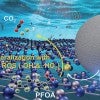
Rice improves catalyst that destroys ‘forever chemicals’ with sunlight
Rice chemical engineers have improved their light-powered catalyst for destroying forever chemical PFOA.
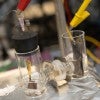
Rice process aims to strip ammonia from wastewater
Engineers develop a high-performance nanowire catalyst that pulls ammonia and solid ammonia (fertilizer) from nitrate in wastewater.

Microplastic pollution aids antibiotic resistance
Microplastics dispersed in the environment may enhance antibiotic resistance. A study led by Rice University found the chemical-leaching plastics draw bacteria and other vectors and make them susceptible to antibiotic resistant genes.

National Academies Gulf Scholars Program launches at Rice
A new National Academies Gulf Research Program will expand the opportunities Rice students have to study and impact the most pressing environmental, health, energy and infrastructure challenges in the Gulf of Mexico region.
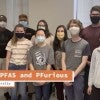
Rice engineers WERC hard for the money
Students calling themselves “PFAS and PFurious” took four prizes, including first place, in this year’s 31st WERC Environmental Design Contest.

Rice team vying for $1 million Solar Desalination Prize
A Rice team's clever design uses the power of the sun to make fresh water from saltwater, even at night.
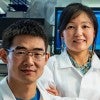
Industrial-strength brine, meet your kryptonite
A thin coating of the 2D nanomaterial hexagonal boron nitride is the key ingredient in a cost-effective technology developed by Rice University engineers for desalinating industrial-strength brine.

NSF renews Rice-based NEWT Center for water treatment
The National Science Foundation renews the Rice-based Nanotechnology Enabled Water Treatment Center for five years. The Engineering Research Center is dedicated to enabling access to clean water around the world.
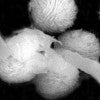
Better wastewater treatment? It’s a wrap
A shield of graphene helps particles destroy antibiotic-resistant bacteria and the free-floating genes in wastewater treatment plants.
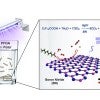
Boron nitride destroys PFAS 'forever' chemicals PFOA, GenX
Rice chemical engineers discovered a photocatalyst that can destroy 99% of the “forever” chemical PFOA
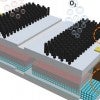
Water-splitting module a source of perpetual energy
Rice University researchers have integrated high-efficiency solar cells and electrode catalysts into an efficient, low-cost device that splits water to produce hydrogen fuel.

Rice engineers: Make wastewater drinkable again
Delivering water to city dwellers can become far more efficient, according to Rice University researchers who say it should involve a healthy level of recycled wastewater.
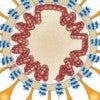
Rice researchers look to ‘trap and zap’ coronavirus
Rice University researchers plan to reconfigure their “trap and zap” wastewater-treatment technology to capture and deactivate the virus that causes COVID-19.